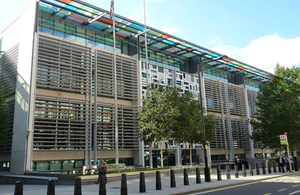Localism Act: power shift to communities charges on
Today the Government’s revolution to hand power back to local communities reaches a major milestone as measures in the Localism Act come into…

Today the Government’s revolution to hand power back to local communities reaches a major milestone as measures in the Localism Act come into force.
Local people, businesses and councils are at the heart of communities and the Government is determined to put them back in control with the choices and chances to shape the future of their local area.
The Localism Act, which received Royal assent in November 2011, is driving this power shift, wiping away unpopular bureaucratic interferences and cutting red tape that locked out communities, slowed progress and stifled innovation.
Parliamentary measures known as commencement orders have brought key measures of the Localism Act into effect, including new neighbourhood planning powers which give local people a major say in helping to shape the look and feel of their areas. Over 200 neighbourhood planning front-runner projects have trialled these new powers, now all communities across the country can get involved.
The key new measures to hand back control, include:
- General power of competence is now in place for all English local authorities, including eligible parish councils. Councils can innovate and legally do anything an individual could do unless specifically prohibited by law. This should give councils that want to continue holding formal prayers the confidence and legal standing to do so. This also gives councils more freedom to work together act creatively and innovatively to improve services, drive down costs and enhance their local area. Councils have asked for this power because it will help them get on with the job.
- New local discounts are available so councils can actively target their own businesses rate discounts in the best way for local businesses. This can be used to encourage new business investment, support for local shops, the high street or community services. Councils should consider this new power alongside the Government’s ‘Portas Pilots’ plans.
- Community Right to Build giving communities a new way to deliver development they want. If they want, communities will be able to build family homes to sell, affordable housing for rent, sheltered housing for older local residents, or low-cost starter homes for young local families struggling to get on the housing ladder.
- New planning enforcement rules which give councils the ability to take action against people who deliberately conceal unauthorised development. They also help to tackle the abuses of retrospective planning applications which have in the past been used to spin out planning appeals.
- Reform of social housing regulation giving social landlords greater freedom to meet local needs and tenant’s stronger tools to hold landlords to account. Changes to the way complaints are managed will follow in 2013.
Measures to scrap interfering and costly bureaucracy and cut red tape include:
- The heavy debt burden of the Ports tax has officially been lifted giving Port-based businesses facing unfair and unexpected backdated business rates bills a clean slate to get on with business. The estimated value of the waived tax bills across England totals more than £175 million.
- Abolition of the Standards Board for England; the bureaucratic and ineffective regime is replaced with locally drawn up codes of conduct. This frees up time and money from councils having to investigate trivial complaints whilst councillors involved in corruption and misconduct will face appropriately serious sanctions.
- Abolition of the Infrastructure Planning Commission which was not directly accountable to the public. Major planning decisions are returned to Government Ministers, democratically accountable to the public. This will not affect the timescales in which decisions are made.
Decentralisation Minister Greg Clark said:
Today is a major turning point in the balance of power in this country as new rights and freedoms for communities to take back control come into force.
The historic Localism Act is beginning to reverse more than 100 years of centralisation, returning power back to citizens, communities and local groups to manage their own affairs free from Whitehall interference.
These powerful reforms are the next step in breaking up the monopoly of Whitehall over public services, giving local people with good ideas the right of initiative to do things differently.
Communities Minister Andrew Stunell said:
The Government’s historic mission to put communities back in control gathers pace today as more and more of the Localism Act comes into effect.
Instead of putting barriers in the way of communities we are actively taking them away, wiping out interferences, cutting red tape and giving people the power to shape the future of their local area. As this revolution in local power rolls on communities can be confident that they are truly at the heart of decision making.
Notes to editors
-
The Localism Act received Royal Assent on 15 November 2011. Certain provisions came into effect immediately or through the first Commencement Order on 3 December 2011. The Second Commencement order came into effect on 15 January 2012. Other commencement orders took affect on 18 February, 31 March, 1 April and 6 April 2012.
-
A plain English guide to the Localism Act is available at: ww.communities.gov.uk/publications/localgovernment/localismplainenglishupdate.
-
A Community Rights website has been launched to give people more information about the new powers and opportunities available to them. The website will continue to grow and expand as more of the Rights come into force. The site can be viewed here: www.communityrights.communities.gov.uk (external link).
-
All Statutory Instruments relating to the Act currently in force are listed and linked here: www.communities.gov.uk/documents/newsroom/word/2126237.doc (Word, 55kb).
Keep up to date with the Department by following us on Twitter (external link).
Media enquiries
Visit our newsroom contacts page for media enquiry contact details.